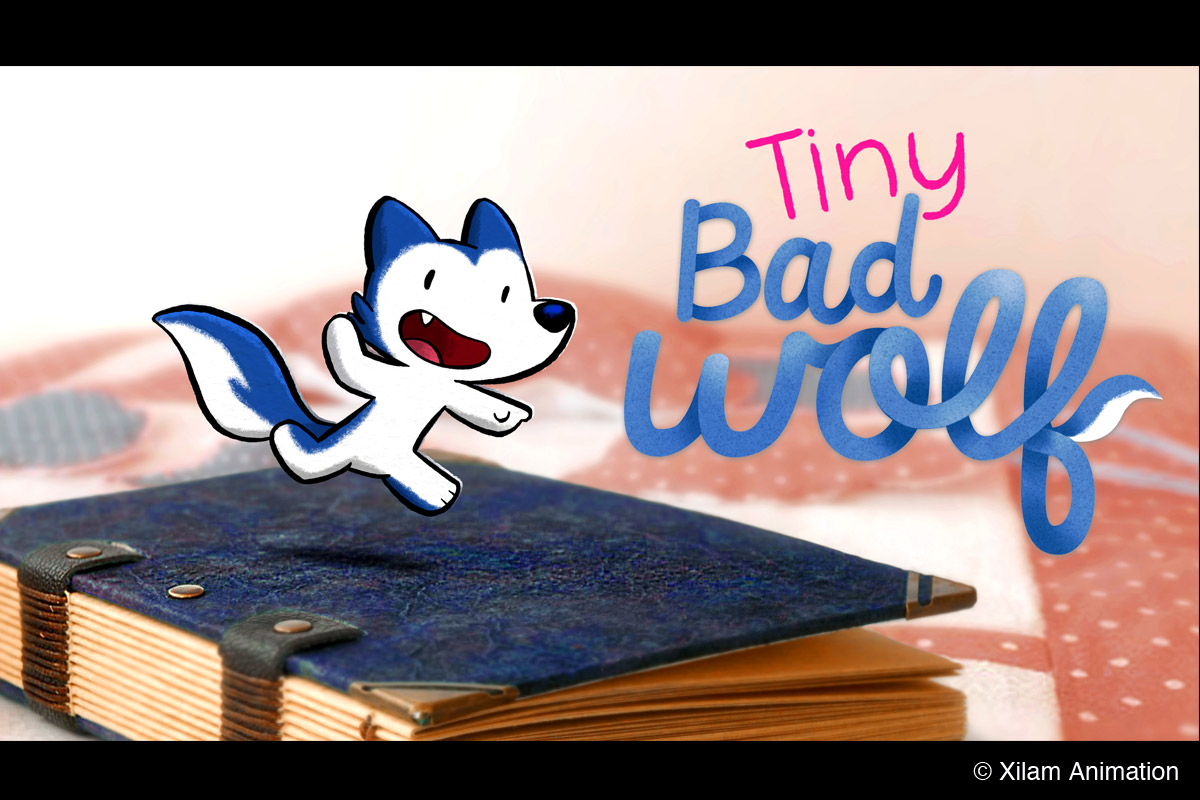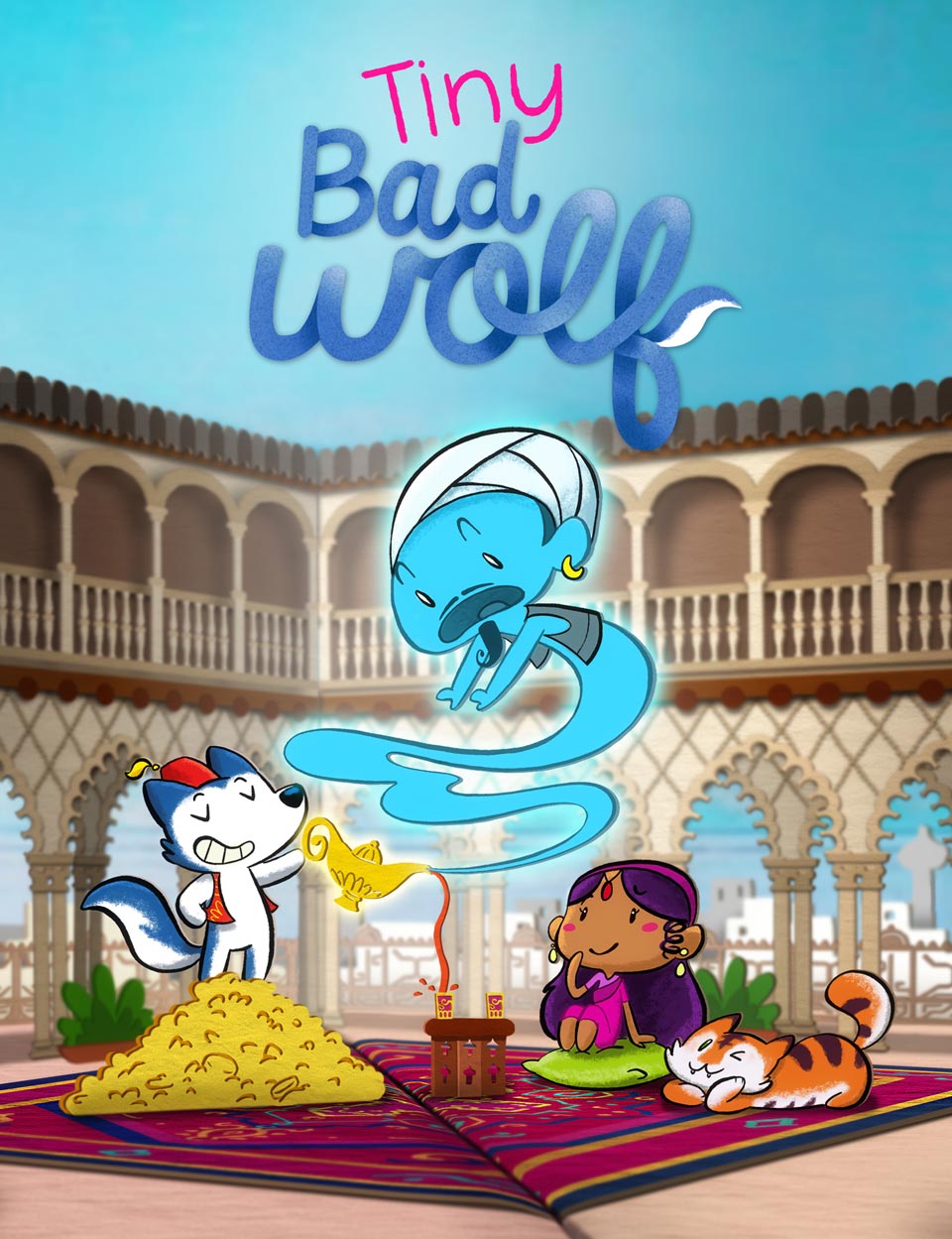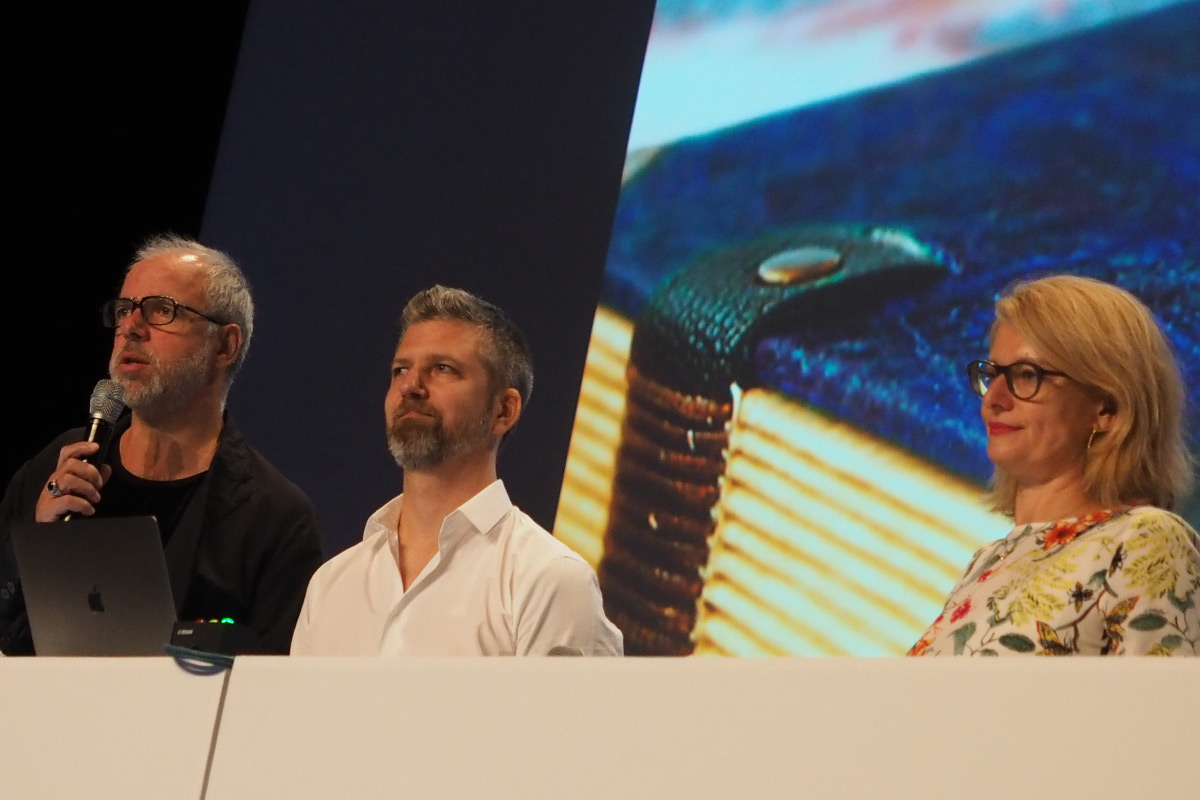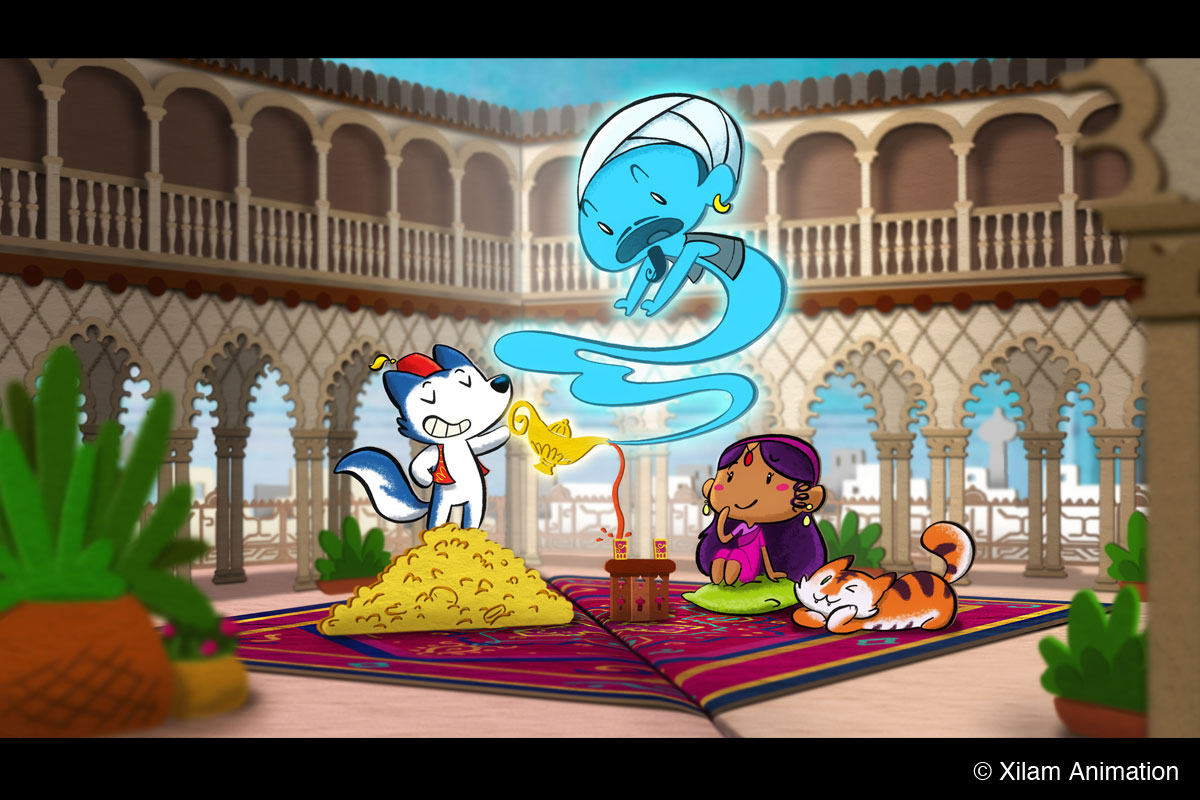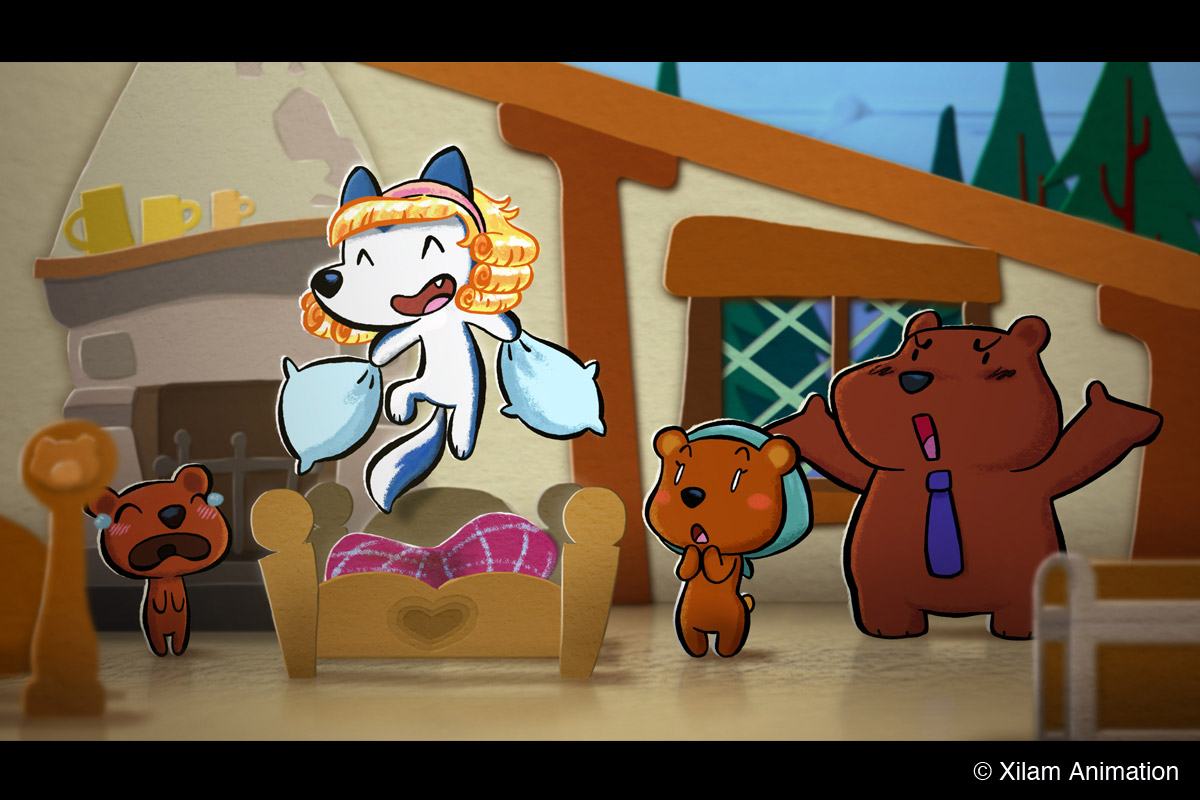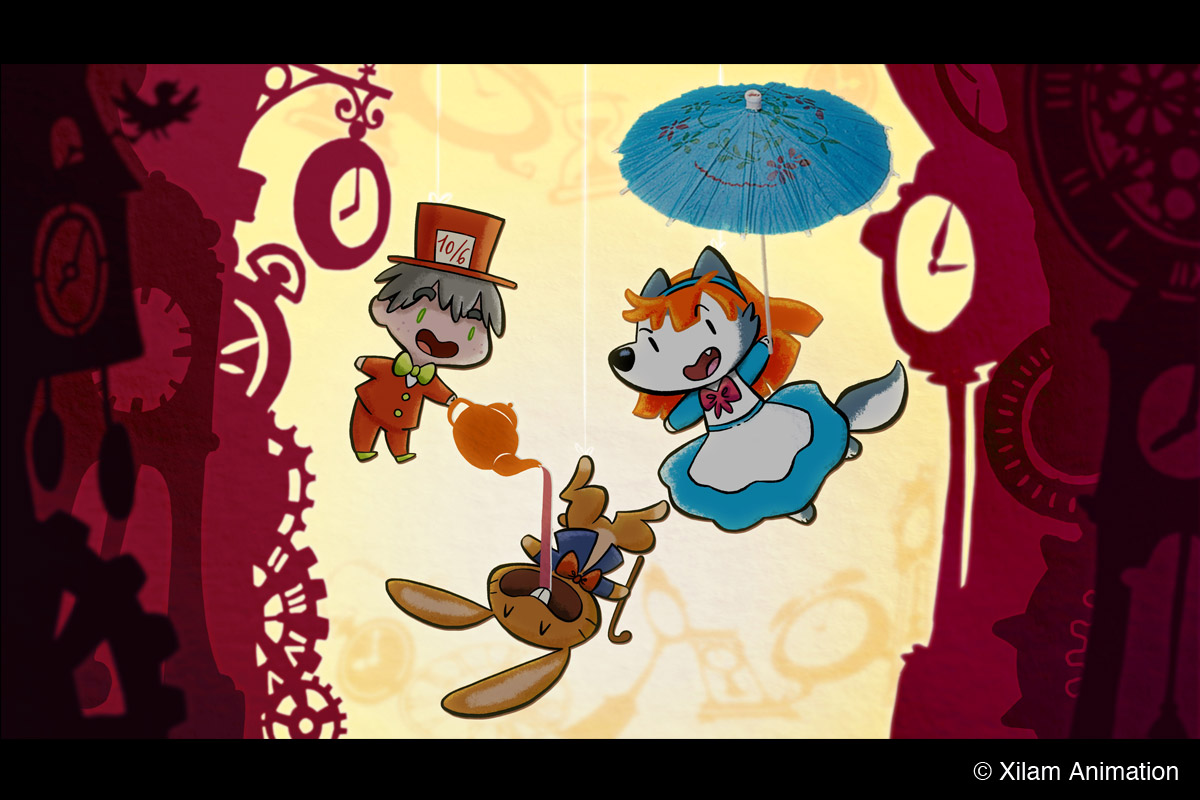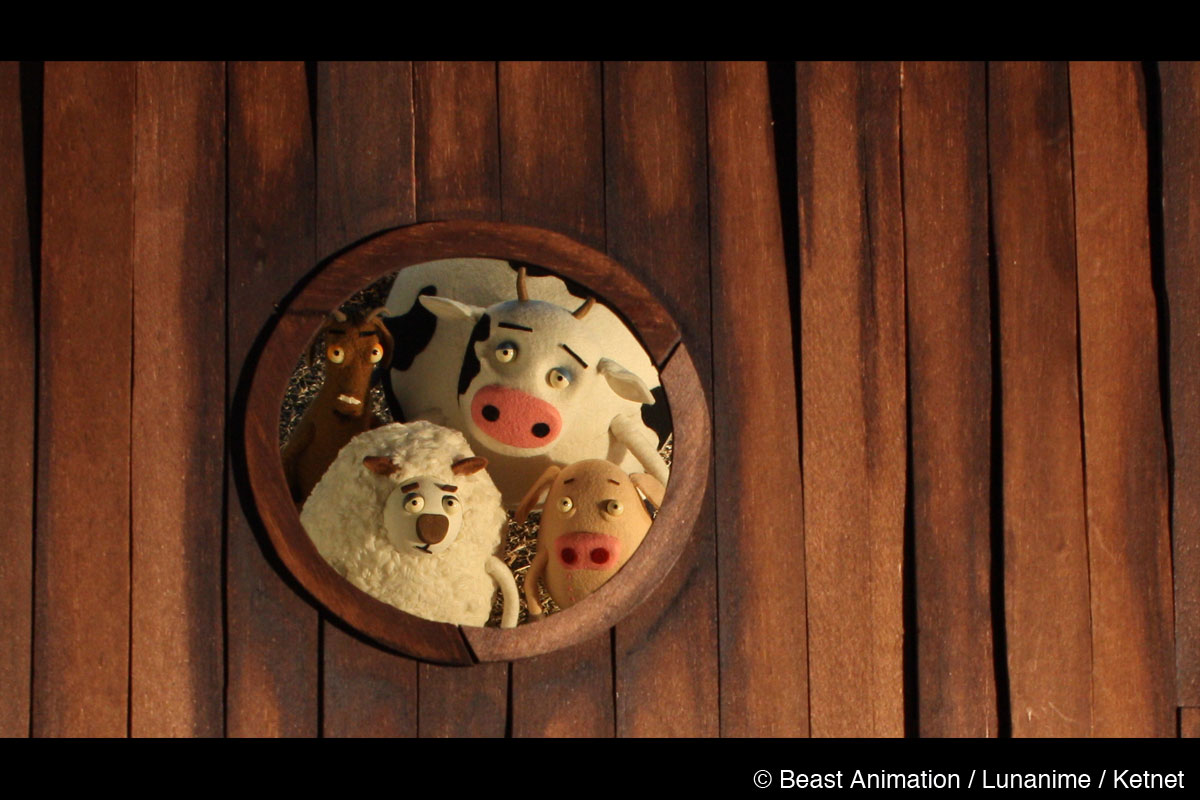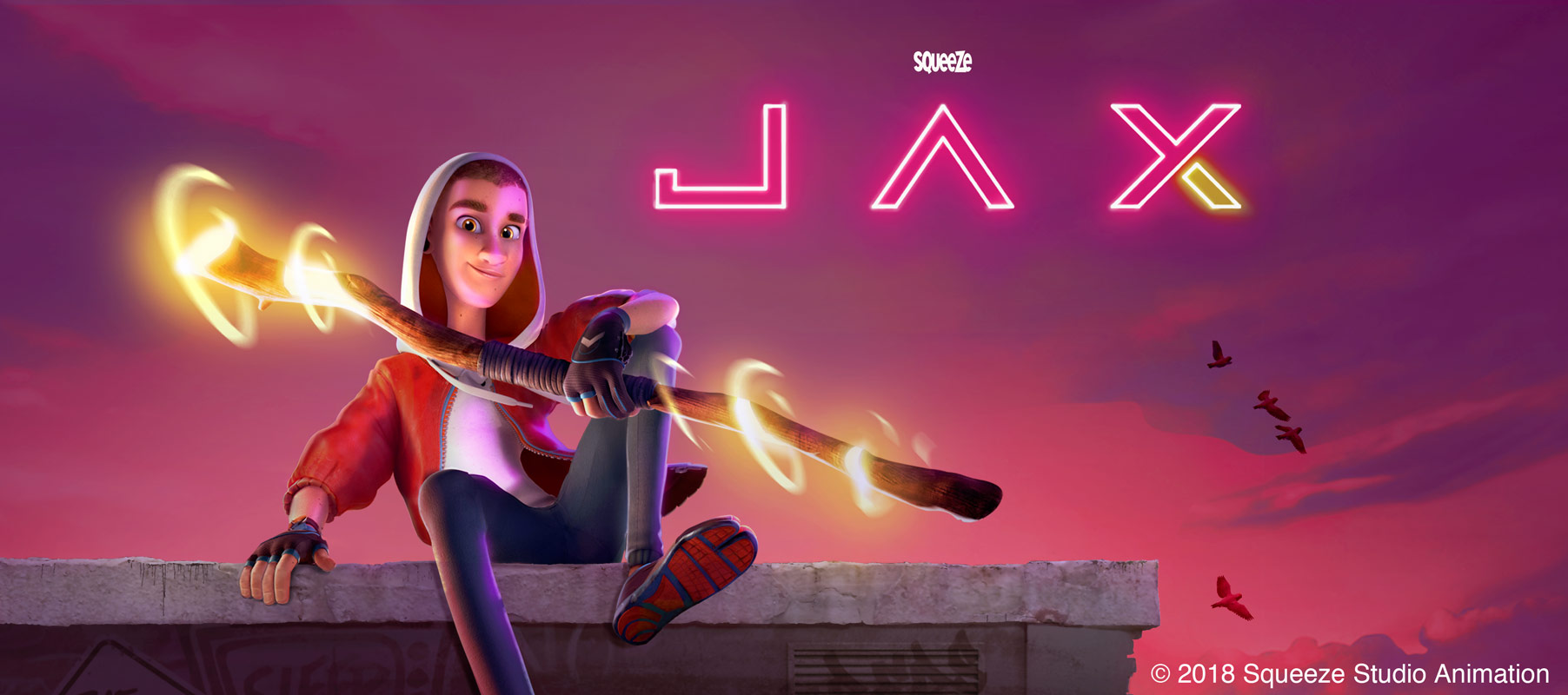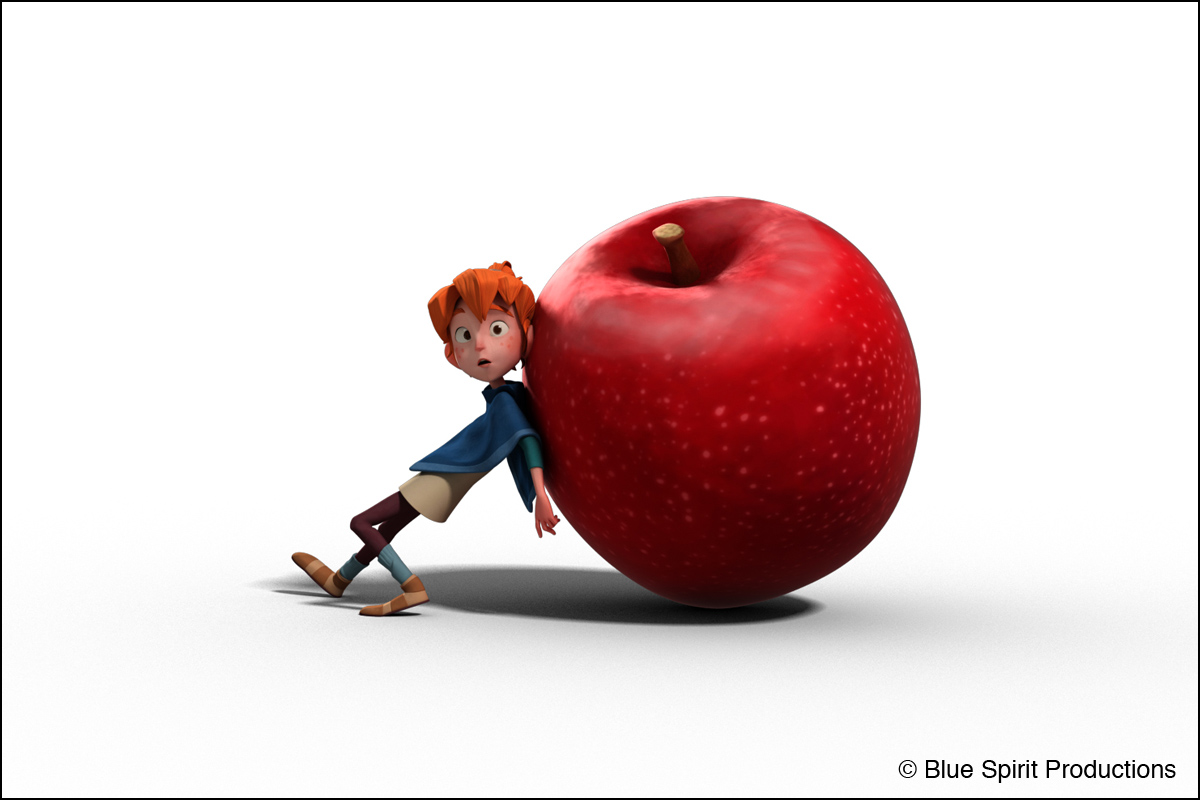Tiny Bad Wolf
(Status: in development)
Synopsis
It’s just not fair: the wolf gets the bad deal in fairytales. He is always the Baddy! But Lupin is cool… and he dreams of being a Hero. So, he decides to sneak into the fairytales fabric, and take on the hero’s identity on the spot, convinced that he can do things just as well. The problem? Lupin is an impulsive, cocksure little kid, and since he insists on doing things his way, he creates a terrible mess! But since he’s also eager to come up with a happy ending, he always goes out of his way to repair his mistakes. He may not be a hero, but by dint of learning from error – Lupin will one day grow up to be a big friendly wolf!
Tiny Bad Wolf
Directors: Nicolas Le Neve and Laura Muller
Authors: Nicolas Le Neve and Laura Muller
Producer: Marc du Pontavice (Xilam Animation, France)
Format: 78×7’
Target audience: Pre-school (3-6 years)
Technique: 2D digital/3D digital/Unity
Tiny Bad Wolf is a new TV animation series project which takes an unexpected turn from the original fairytale formula. The project was pitched during Cartoon Forum 2018 and gathered a lot of interest from many attendees of the event, including a lot of investors.
I found two big characteristics of the project that makes the project very unique and attractive in their presentation. First, it is a story of a wolf who has a good and friendly personality and wants to be a hero, although he seems to be a bad guy from all characters in the universe of the story because, as you know, the wolf is traditionally a bad character in a lot of fairytales. Second, the whole universe of the animation is a pop-up book. Each page of the pop-up book will be a scene with cute characters acting and showing the story only on the open pages of the book. I personally felt that this animation series can make kids see imaginary characters in a kid’s room come to life in front of them, as you can see in the teaser.
To learn more about this interesting project, I interviewed Marc du Pontavice, the producer and the CEO of Xilam Animation, and the two main creators of the series Nicolas Le Neve and Laura Muller.
Interview with Marc du Pontavice
Hideki Nagaishi (HN): Before starting the questions about the project, I would like to hear about the studio because you are the president. Could you please let me know how your studio started?
Marc du Pontavice: Xilam started in 1995, more than twenty years ago. At that time, we positioned ourselves more into slapstick comedy and we created some shows that made huge worldwide success such as Oggy and the Cockroaches and Zig & Sharko. That established a reputation for the studio that would help us grow a lot. We produced pretty much 2500 episodes so far in the past 20 years. And recently, four or five years ago, we decided to expand and diversify our portfolio and that is how we started to produce pre-school shows. So, three years ago, we started a show called Paprika which is just starting to launch this year. Now, we are moving up with a new pre-school show, Tiny Bad Wolf.
HN: What do you think is the unique selling point of your studio?
Marc du Pontavice: I think it is both depth in the concept, and immense precision in the execution. So, what we want to achieve with our shows is that for only a few seconds on screen, it distinguishes itself visually, sound-wise and story-wise. There are so many offerings nowadays for kids, so you need to create a hook with them very quickly and that needs a lot of work, visually, sound-wise, story-wise, all of that. This is what we are trying to achieve.
HN: I would like to ask you a little bit about the project. How did the Tiny Bad Wolf project start?
Marc du Pontavice: For the past 5 or 6 years, every year we launch within the studio what we refer to as a “Call for project” and everyone in our 400-person studio can participate. We give a description of the kind of show we’re looking for. Two creative writers, Nicolas Le Neve and Laura Muller, decided to make a proposition. They had this great idea of the traditional bad character, the wolf, who doesn’t want to be bad, he wants to be good. He wants to be a hero. This entire concept lies on the willing of being a hero, but with the difficulty of being a hero. While this is difficult, this is a way of learning and getting to know yourself for finding your identity.
HN: I really love the idea of the visuals. Each episode is a story from a pop-up book. Who came up with the idea of the visuals looking like a pop-up book?
Marc du Pontavice: It really is the creators, Nicolas and Laura. They really came up with that great idea. What I like about this is the idea that a book contains a whole world, which is very nice. Also, it is one indirect way of telling the kids that books are great, they are exciting, and it triggers the imagination. What I love most about kids is that sometimes, they can play with barely nothing. They don’t always need electronics. And a pop-up book, is very simple. It’s just like a little theater.
Interview with Nicolas Le Neve and Laura Muller
HN: Could you please tell me a little bit about both of you as creators, such as you career before this project?
Nicolas Le Neve: Being both scriptwriter and storyboard artist for an animated series is usually the perfect combo to me. These steps of the early design for an episode can be as exciting as demanding, yet I assume they require a great deal of creativity. This particular need of creativity is my motivation in designing the new series.
Laura Muller: I began as a 2D animator, then I specialized in directing, and storyboards. I noticed that what suits me best is contributing in every step, by tinkering. This explains this unconventional project, and its out-of-the-box mechanism.
HN: Could you please let us know the role each of you had for this project?
Nicolas Le Neve: I wrote the basic concept of the series. Concerning designs, I was good with my pop-up backgrounds, but not with the characters. Therefore I asked my long-time friend Laura whose artworks I love, and whose style fits perfectly with our characters!
Laura Muller: The funny thing is, Nicolas didn’t know that I am fond of pop-ups books too, I even have a whole collection of it back home. I immediately fell in love with this mischievous Little Wolf. It began with a drawing, and then, all the characters, villains included, appeared naturally on the paper…
Nicolas Le Neve: I ran the script and storyboard for the pilot, and I was in charge of its direction.
Laura Muller: I created the designs and animation for the pilot. Today we are working together as co-directors on the series.
HN: Where did the initial idea of the story come from? How did you come up with the idea of a wolf, who is traditionally a bad character in a lot of fairy tales, has a good and friendly personality and wants to be a hero?
Nicolas Le Neve: When my second daughter was born, I wanted to create a series. To tell my children that the world is not divided between good and bad guys, it is all a matter of the point of view. Nobody is forced to follow one’s path, being different is actually a chance and, in life, there is an infinity of possibilities.
I read stories to my children, and I found the vision of the world in it pretty tough. A wolf, who refuses his destiny as a villain, appears to me as a good metaphor to talk about.
HN: The visual experience of this animation series is very unique. I felt like I was looking down at a small world different from our own. I would like to hear about the development of the visuals of the universe we can see in the teaser and some scenes you showed during the presentation at Cartoon Forum 2018. What kind of new challenges did you confront and what sort of difficulties did you face throughout the development, if you have any?
Nicolas Le Neve: Happy to know you enjoyed it! It was important to visually start from reality – the child’s bedroom, and the land on a small, colorful and hand-manufactured world – a cardboard picture book. The series aims to get people to open books, read stories, and escape from reality. The pop-up book effect has a fun and technical dimension that kids enjoy a lot.
Laura Muller: Thanks to the pop-up effect, our little world comes alive and moves as the book opens. The challenge here was to make a pop-up background open in a realistic way. It was so important to me. Stop-motion was an interesting option, but it turned out to be too restrictive, so we moved to CGI.
Nicolas Le Neve: I worked on the series Mr. Carton, in which a cardboard universe was designed in realistic CGI, with the use of the software Unity. The director Michael Bolufer helped us by designing all the CGI parts of our pilot.
Laura Muller: Since the script, we had to think about how the story could fit into only three theatre sets, for every single book page. The staging differs a lot from what we were used to working with.
HN: What kind of experience or message do you want to give to kids through the animation series?
Nicolas Le Neve: I would like to explain to kids that being a hero doesn’t necessarily mean being a winner, nor a boss, neither a star. A hero is also someone who is happy and makes people happy. A true hero makes the world a little better every day.
Laura Muller: As small as our book can be, it contains each of Lupin’s worlds. When I was a child, I was able to create a world in my room, just by making up a costume or improvising great epics. I remembered that while I was working on Tiny Bad Wolf: I hope, thanks to our series, children will imagine their own adventures!


